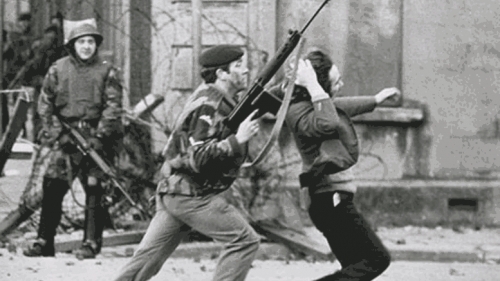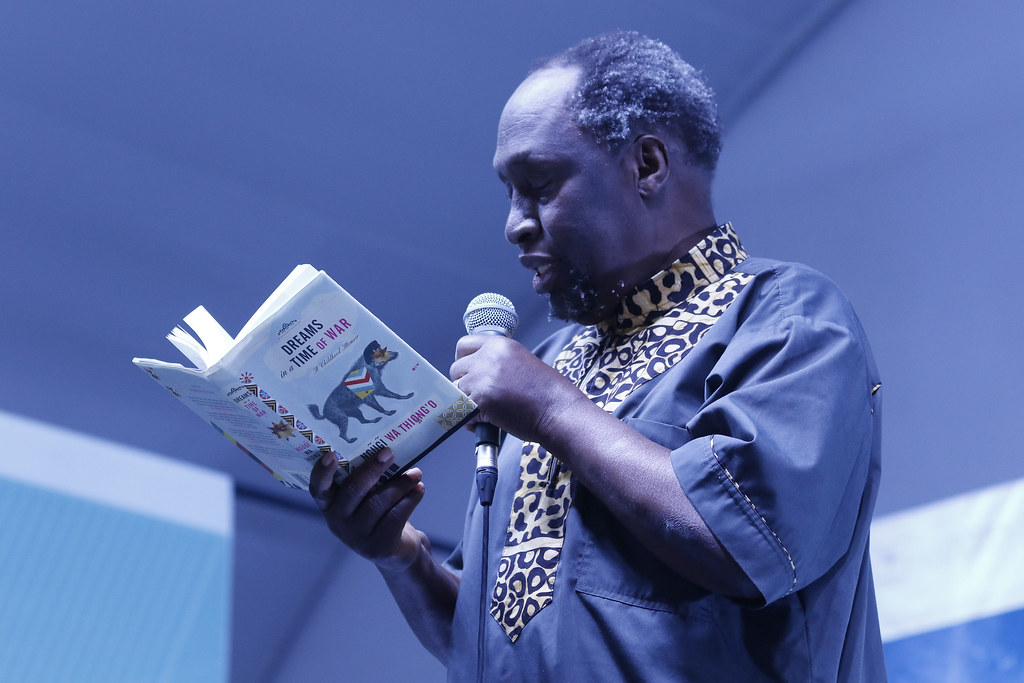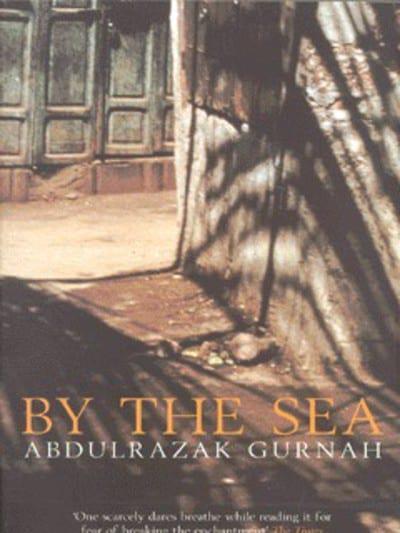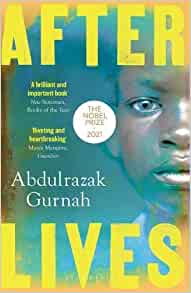As Ireland observes the centenary of its incomplete independence – the setting up of the ‘Free State’ with dominion status and the partition of the country – care must be taken not to distort history. One of the authors who lived through the years of upheaval and the years of the Free State, Liam O’Flaherty, wrote about those times honestly and unflinchingly.
Liam O’Flaherty is one of the foremost Irish fiction writers of the 20th century. Like none other, he commented on the times as they were unfolding in his novels written in the 1920s and early 30s. He achieved his international breakthrough with the novel The Informer in 1925 – a novel set during the War of Independence.
In addition, O’Flaherty’s interest in Irish history resulted in the first Irish anti-war novel, Return of the Brute, a Civil War novel, The Martyr, as well Famine (1937), Ireland’s first serious artistic grappling with this Irish holocaust.
O’Flaherty was born in 1896 on the largest of the Irish speaking Aran Islands, Inis Mór, and he left the island for secondary education aged only 12 in 1908.
During WW1, in 1916, O’Flaherty joined the British Army. Back in Ireland, the Easter Rising took place in late April 1916. The Rising was defeated and its leaders were executed. In the Easter Proclamation, the leaders had set out important aspirations for an independent Ireland:
- the right of the people of Ireland to the ownership of Ireland
- the Irish Republic to be a sovereign independent state
- religious and civil liberty, equal rights and equal opportunities for all its citizens
Awareness of these demands help to understand O’Flaherty’s supreme disappointment with the state that evolved after 1922.
Class-based divisions in the struggle for liberation
British atrocities after the 1916 Rising fuelled the War of Independence, which took place from 1919 to 1921. In May 1921, Ireland was partitioned by the British Government, which set up Northern Ireland. A ceasefire and talks between the British and the leaders of the Irish rebellion resulted in the Anglo-Irish Treaty of 6 December 1921, ending direct British rule in 26 of the 32 counties. A year later, the Irish Free State was established, which was not a republic, but a Dominion of Britain. This Treaty, was the cause of the Civil War between the forces of the pro-Treaty provisional government – later the Free State government – and the anti-Treaty volunteer army (IRA), which had its own executive.
This class-based division of a united front for liberation into the monied forces with the Catholic Church behind them on the one hand, and on the other hand the dispossessed who aspire to a new society, became very evident during the Civil War and the subsequent Free State government. Its post-Civil War reality is apparent in O’Flaherty’s book The House of Gold.
Two parties that still figure largely in Irish politics, Fine Gael and Fianna Fail, emerged from Sinn Féin, the national liberation movement, after the Civil War. The pro-Treaty party Cumann na nGaedheal, later Fine Gael, aligned itself with big business, and then with the European fascists. It was supported by the Catholic hierarchy. Fianna Fáil, the anti-Treaty party, had its base among the working class and small farmers. However, the difference between these two Civil War enemies has dwindled to practically nothing today, and they have governed Ireland on separate occasions in similar ways for the past 100 years.
O’Flaherty’s experience of WWI left him strongly anti-war and a committed socialist. He travelled widely after the war, but returned to Ireland in late 1921, and became a founder member of the first Communist Party of Ireland in November 1921. On 18 January 1922, two days after the establishment of the Irish Free State, O’Flaherty, as Chairperson of the Council of the Unemployed and other unemployed Dublin workers, occupied the Rotunda concert hall for four days, flying a red flag. The Civil War began in May 1922 and O’Flaherty joined the Anti-Treaty Republican side. After their defeat, he fled to London in July 1922.
There he began writing. He became a close friend of the German socialist, Carl Lahr and his wife Esther Archer, who managed the Progressive Bookshop. The left-wing circle around this bookshop became O’Flaherty’s political home. In London, he encountered first-hand the Expressionist movement, and almost all of Liam O’Flaherty’s 1920s novels are expressionist in character.
We return to the Civil War and its aftermath for a moment, as this is significant for understanding O’Flaherty’s work in the 1920s, all of which comments on the new Free State.
Liam Mellows, imprisoned and executed by the Pro-Treaty forces during the Civil War, notes in a prison letter on 25 August 1922:
In our efforts now to win back public support to the Republic we are forced to recognise whether we like it or not – that the commercial interest, so-called, money and the gombeen men are on the side of the Treaty, because that Treaty means Imperialism and England. We are back to Tone – (…) - relying on that great body, ‘the men of no property’. The ‘stake in the country’ people were never with the Republic.
The forces that seized power in the new Irish state confirmed this to the letter. Their betrayal of the ideals of 1916, the betrayal of the ideals of the War of Independence, becomes a paramount theme in Liam O’Flaherty’s 1920s novels. The aspirations of the Easter Proclamation were sacrificed to money and power. The right of the people of Ireland to the ownership of Ireland, religious and civil liberty, equal rights and equal opportunities for all its citizens – all were abolished in one fell swoop.
How religious and literary culture conforms to ruling-class hegemony
The Catholic Church, a central institution in Irish religious culture, actively supported this betrayal and soon the Free State became a Catholic State for a Catholic people. All aspects of society in the Irish Free State were controlled by the Catholic Church. This included the notorious Church-run ‘Mother and Baby Homes’ for unmarried mothers, where children given away by the nuns for adoption, and there was an unspeakably high mortality rate for children. Recently the remains of 796 babies and young children were discovered in the sewage system of just one of these institutions, in Tuam, Co. Galway.
In 1929, the Censorship of Publications Board, a central institution in Irish literary culture, was established to prohibit any publications they found to be obscene. This made it illegal to buy, sell or distribute any such censored publications in Ireland. The first book banned by this Board was The House of Gold, O’Flaherty’s Galway novel that took to task the men who seized power in the Irish Free State following independence. Four more works by O’Flaherty were banned. The index of censored works consisted of hundreds of books by Irish and international writers.
These are the two overarching themes Liam O’Flaherty takes on in his novels and some short stories: the betrayal by the Irish bourgeoisie of the ideals of Independence, and the crippling of Irish people by the Catholic Church.
Two examples of Liam O’Flaherty’s work to illustrate this undertaking, the 1929 novel The House of Gold, and his 1925 short story “The Outcast”.
The House of Gold
This novel is set in the fictional town of Barra, easily recognised as Galway, the city closest to O’Flaherty’s homestead on the Aran islands.
The novel’s significance lies in the way it exemplifies and typifies for Ireland, and by extension for other post-colonial countries, how the newly empowered, corrupt native bourgeoisie has replaced the British ruling class, headed by the power-hungry Ramon Mor Costello and his clerical allies.
Ramon Mor is a Cumann na nGaedheal politician, who extracts his wealth from a largely rural proletariat and deprives the town of Barra and its environs of its wealth and hopes for the future. He is what in Hiberno-English is known as a gombeen man. The word comes from the Irish word “gaimbín”, meaning exorbitant financial interest, a term that became notorious for those shopkeepers and merchants who exploited the starving during the Famine by selling food and goods at high prices and charging enormous interest rates.
The House of Gold is O’Flaherty’s only novel in which a gombeen man figures in a leading role. Although this character was inspired by a particular Galway businessman, O’Flaherty states unambiguously in the novel: “in every little town in Ireland you will find a man like Ramon Mor”.
The action of the novel takes place over the course of 24 hours. It follows a number of main characters: Ramon Mor Costello, his unhappy, beautiful wife Nora, her lover Francis O’Neill, who shares some features with Liam O’Flaherty, the town’s doctor Jim Fitzgerald, as well as quite a number of people associated with them, including the police. The action begins at midnight with a rendezvous between Francis O’Neill and Nora. What arises in the plot is Nora’s probable rape by a priest, her attempts to break free of Ramon and his family, Ramon’s business dealings, a public meeting, a robbery, and two, if not three, deaths.
This sounds like a thriller; yet the novel, in its 21 chapters, focuses less on the background action, than on individuals, their motivations, their relationship with Ramon Mor. The various encounters take place in a number of locations – Ramon’s house, his office, outdoors on the hillside, at the fish market, in the church, the doctor’s house, the pub and at a public meeting in the town’s main square. The scenes, depicting people of all social strata, are filled with talk and energy, they are individualised, visual, and dramatic.
The social panorama of the town unfolds, as all are shown each in their dependence on the tyrant Ramon Mor. This dependency causes distress and indeed something close to madness in some of the characters, for example Father Considine. Other characters suffer due to their weakness, their inability to stand up to Ramon Mor. These include the doctor, Ramon’s sister, Fr. Considine, and Nora herself.
Rather than follow a strictly chronological, linear, traditional plot curve, the events take a back seat to the relationships that are revealed in the novel. It is noticeable that here, as in other O’Flaherty novels, there are no heroes, no characters the reader is invited to identify with. Instead, in Brechtian style, readers are kept at an emotional distance, which encourages them to view the scenes with a detachment that allows for critical thought and reflection. The reader sees the characters and their relationships for what they are, undeterred by emotional identification. O’Flaherty proves himself here, as in other novels written in the 1920s, to be part of the European modernist avant garde, and must be classified along with Brecht and other left-wing modern writers of this time.
The essential truth about the Irish Free State after independence was, as Liam O’Flaherty saw it, that the new, Irish bourgeoisie has simply stepped into the shoes of the English and Anglo-Irish landlords. They have literally moved into their big houses and continue to exploit the working population in the same way as before. As the character Francis O’Neill says:
That house you are living in now once belonged to Sir Michael de Burgo. He was the landowner around here. …. He was a tyrant and an enemy of the people. … but he was seven times better than the man that’s there now, because, after all, it was not his own class or his own flesh he was eating, same as Ramon Mor is doing. … in the last rising of the people, I and the like of me put the finishing touches to the landlord class, fighting with the whole country against us, while Ramon Mor lay low, waiting to see how the cat would jump, by God, at the same time, making money out of our blood by selling rations to the soldiers we were fighting. And when it was all over and we won, it was he stole into that empty house and grabbed the land we fought for.
Ramon Mor Costello, along with many of the characters around him, are damaged by the times of their own making, deprived of their humanity in diverse ways, out of touch with themselves and their own people. O’Flaherty shows that independence has not brought about a freer society. Yes, Ramon Mor has money and power in the new state, but even his wealth is shabby and rundown. His political power serves only to increase his power over his people, to make them miserable. Their lives are no different to before, very little has changed or improved.
In addition to this, readers see the influence of the Catholic Church, which is never far away from Ramon Mor. The doctor comments,
The Church is more sacred than the law, and the citizen has very few rights where the clergy are concerned.
Many of the impoverished ordinary folk, the people living in the mountains, emigrate. They are Francis O’Neill’s people. He encounters them on their way into town. Among them is a big man who understands:
Who’d stay on these rocks but a lunatic, working for Ramon Mor Costello? (...) sure there’s nowhere else for them to go but to America. Aren’t they flying every day, as if there were a plague in the country? Soon there’ll be nobody left. And that miser down there, that grabber Ramon Mor is the cause of it. He has ruined the country. My curse on him.
The villagers see small boats from the Aran islands approaching Galway Bay harbour. These are Ramon Mor’s people. And we have another encounter, this time between Ramon and his own villagers. A parallel character to the big man in the previous scene, is Tommy Derrane:
a well-known fellow in the district, because of his strange conversation and his demented wit. He was terrifying in appearance because of his wild, restless eyes, his pale face, his sudden grin, his hunched shoulders, his bobbing chin and the twitching of his limbs. He was dressed in island costume. He was tall, large-boned, lean, terribly vital, a typical islander.
Derrane says:
God listens to the prayers of the rich. All the power of the world is in service to the rich man.
The rich man turns everything into gold, for he is wise and he has no pity for the hunger of an empty stomach. He has no conscience. He doesn’t see the misery of the poor, for he has a magic veil over his eyes. He is deaf and blind like God, who made Hell as well as Heaven.
It is the ordinary working people who see through Ramon Mor completely, understand his nature and know they can neither trust him, nor expect to be treated any better than they were under de Burgo. Derrane and the big man in the earlier scene represent the potential of the people to see through Ramon. Both have energy and insight, and are unafraid, yet isolated. Both are seen as outsiders and the majority of the people around them are subservient to Ramon.
There seems little comparable insight in the town’s population. The town is destitute, semi-derelict, the inhabitants overcome with a sense of powerlessness and hopelessness. There is no sense of the kind of energy and anger we see in the individuals from the rural outposts. The middle-class characters in the novel are ineffectual, often too afraid of Ramon and his power to act decisively. This fear impacts on a latent resentment that fails to spark into rebellion.
At a public meeting, we come across the proposals for change and reactions of different people of the middle class – the solicitor, the doctor, the proprietor of the Railway Hotel, Finnigan, the businessman Fogarty. Solicitor Mr Fitzpatrick addresses the meeting. He says that the people of Barra “must root out the cancer that is eating into the heart of their social life.” While Fitzpatrick has insight, the reader has no indication that this will go anywhere.
Bob Finnerty, the labour union organiser, speaks against him and says “It’s not people like you who are going to free the people from oppression. It’s up to the working class...”
While all this is going on, the doctor arrives at the conclusion that he was “really equipped for leading an analytical life, for accepting reality and for influencing his fellow-creatures towards the pursuit of beauty by moving inwards on his own soul”. Little hope for real change comes from any of these people. The police too, it is suggested, are in the hand of Ramon Mor.
Too great is the combined power of Church and State. When the doctor suggests setting up a library, the townsfolk comment:
How are ye going to have a library, when Fr. Considine’d come and burn the books? Not that I want a library. That man Ramon Mor has this town sucked dry. Along with taking the people’s money, he has taken their hearts as well.
The hearts that struggled for independence have been taken away by this unholy alliance. And because there is no visible change to colonial times, the people give up hope. The ideals of 1916, the ideals of 1921 have been sold out. Instead, the Free State has become a neo-colonial backwater ruled by the gombeen, and created a system where even access to literature and thought is censored.
In this way we find in The House of Gold a complex social panorama of Irish society in the early years of Irish Free State with many echoes that ring true to the present day. To quote from Tomás Mac Síomón’s perceptive introduction to his republication of The House of Gold 80 years after its first and only publication:
This re-issue of The House of Gold by Nuascéalta, the first since 1929, should find particular resonance in a contemporary Ireland where the threatening figure of the local gombeen merchant has been replaced by that of the Troika. An anxious, submissive and debt-ridden citizenry, unjustly beholden to foreign bond-holders, now takes the place of the debt-ridden citizens of 1920’s Barra, cowering under the baleful glare of Ramon Mor Costello.
Since such contagion has now infected the entire world of contemporary capitalism, the basic theme of this extraordinary novel is truly universal. If only for its masterly depiction of the vicissitudes of a population deprived of real power, alternative leaders and a sense of direction, Liam Ó Flaherty’s The House of Gold deserves an honoured place in the world canon of socially committed literature.
It is typical of O’Flaherty novels of his time that there is no hero, no one person who truly grasps the situation and attempts to change it. The central character is a villain. All other important characters belong to the middle class and are weak, highly improbable leaders. These must be sought among the people – Francis O’Neill’s own people, whom he meets coming from the mountains and Tommy Derrane from Aran who directly challenges Ramon Mor. However, they are very marginal indeed. The majority of the people we encounter appear traumatised by the loss of the ideals for a society that would treat “all the children of the nation equally”, as the Easter Proclamation had determined. Demonstrating the absence of a united force capable of bringing about change shows the realism of O’Flaherty’s work. A sense of stagnation prevails.
The Outcast
O’Flaherty’s short story “The Outcast”, published February 1925, is a text in which the world of a well-fed and well-rested priest, attended by an intimidated housekeeper, clashes with the reality of a young girl who has recently given birth and who appeals to him for help. His response is true to the time and reflects a power and inhumanity on the part of the Church, and the political establishment that facilitated it, which continued for a very long time.
The young girl says,:
I have no place to go to. No shelter for me child. They’re afraid to take me in in the village for fear ye might ... Oh! Father, I don’t mind about mesel’, but me child.
She states here quite clearly that no one in the village will dare oppose the iron grip and diktat of the Church. It is left to this young girl to go to the priest and appeal for humanity. But of course, she is too isolated and weak on her own, and so she is insulted and sent away. Not only does O’Flaherty highlight the Church’s power and control, he also underlines the deep-seated clerical prejudice against and hatred of women. Indeed, in this short text, the housekeeper covertly tries to hand the distressed girl something in an act of solidarity, an attempt to help:
The housekeeper opened the hall door. She was thrusting something into the girl’s hand, but the girl did not see her.
I mentioned the Church-run homes earlier, where unmarried mothers and their children were kept in gulag-like conditions, the children frequently not surviving. Any birth control was banned until 1979, with further easing on the sale of contraceptives in 1985. However, abortion was completely illegal and impossible to obtain in Ireland until very recently, when the law was changed by referendum in 2018. This means that for almost 100 years, women who did not wish to or could not go ahead with a pregnancy, had to travel abroad to terminate it. Many, many women died as a result, as even in the event of fatal foetal abnormality, or indeed life-threatening conditions of the mother, no abortions were performed. As we speak, there are still people who picket abortion clinics in Ireland to harass the women who have the need to avail of this service. And the present Irish government continues to permit this form of intimidation.
O’Flaherty’s writing in Irish
O’Flaherty was a native speaker of Irish and a gifted storyteller. He wrote poetry and short stories in Irish as well as his play Dorchadas. Dorchadas is possibly the only expressionist play ever written in Irish. O’Flaherty tells of the fate of an amazing project in a 1927 letter to the Irish Statesman:
I wrote a few short stories for the Gaelic League organ. They printed them … I consulted Pádraic Ó Conaire and we decided that drama was the best means of starting a new literature in Irish … the two of us went to Dublin …[and] put our scheme before them [the Gaeltacht Commission] for a travelling theatre and so on. I guaranteed to write ten plays. They thought we were mad and, indeed, took very little interest in us. In fact, I could see by their looks and their conversation that they considered us immoral persons.
And so, what might have been a truly vibrant project to move literature in Irish into the 20th century, and even embrace modernist writing, was extinguished by the Free State. Reverberations of its actions and inaction are felt to this day. O’Flaherty recorded the minutiae of these inglorious years like no other Irish writer.

























